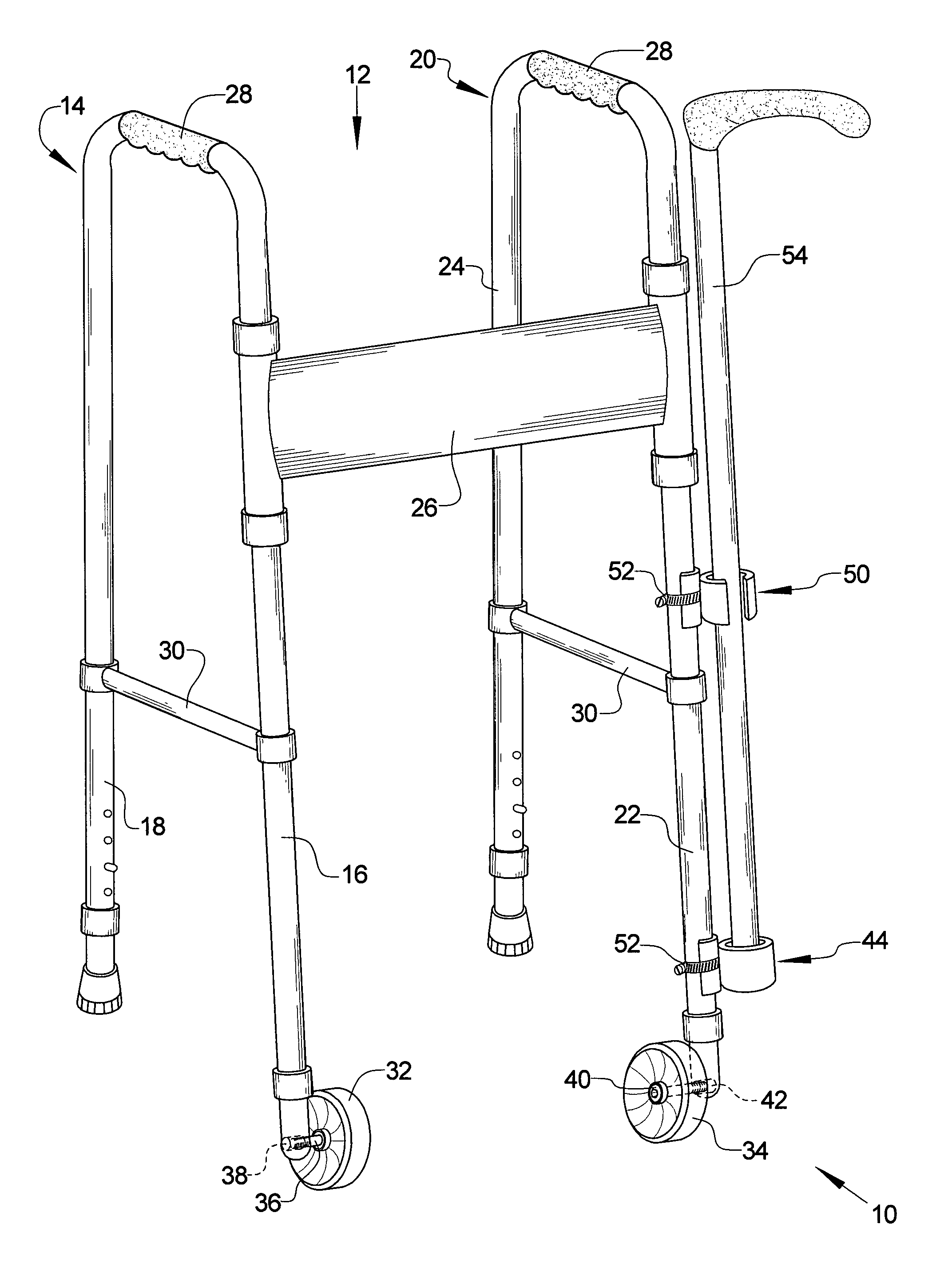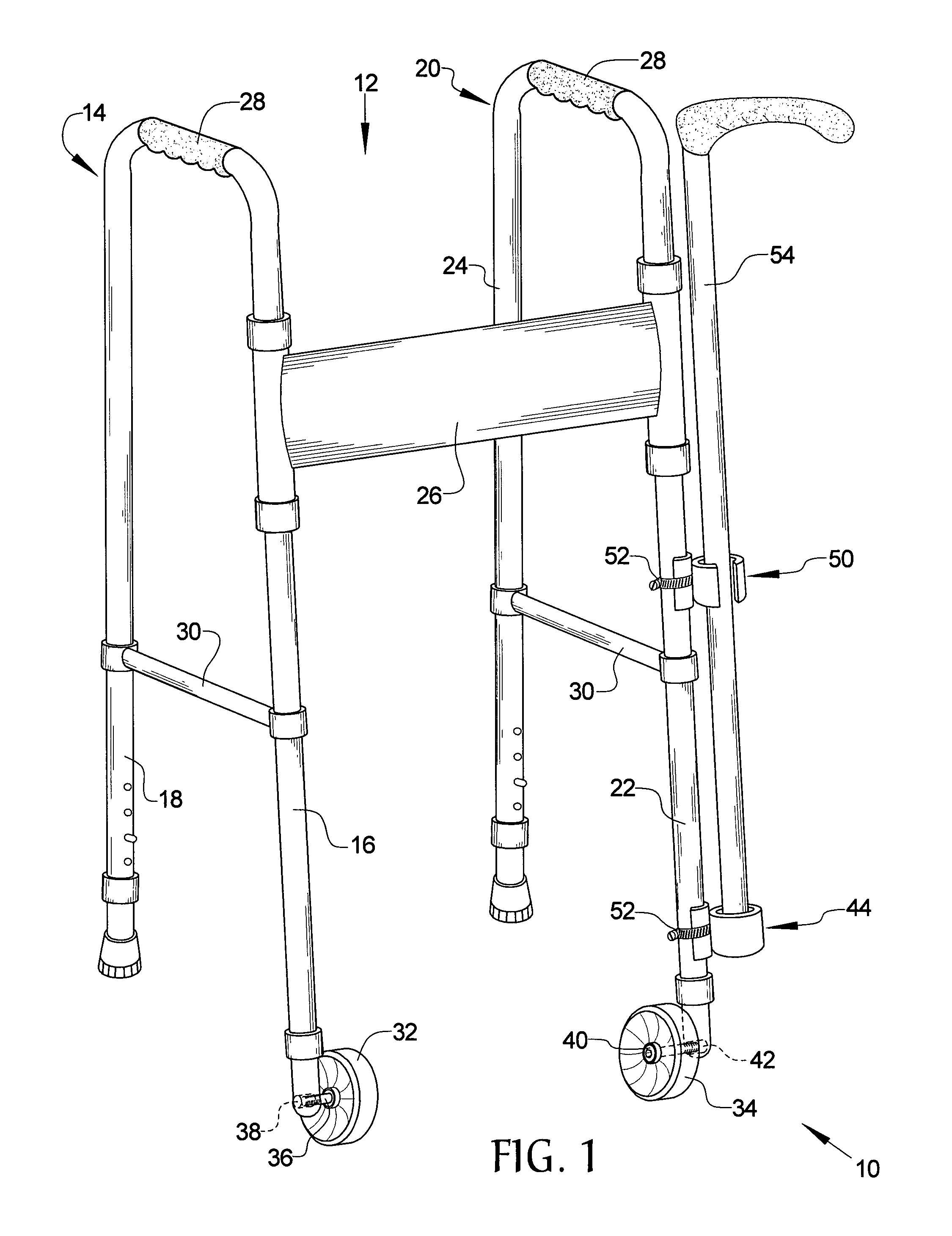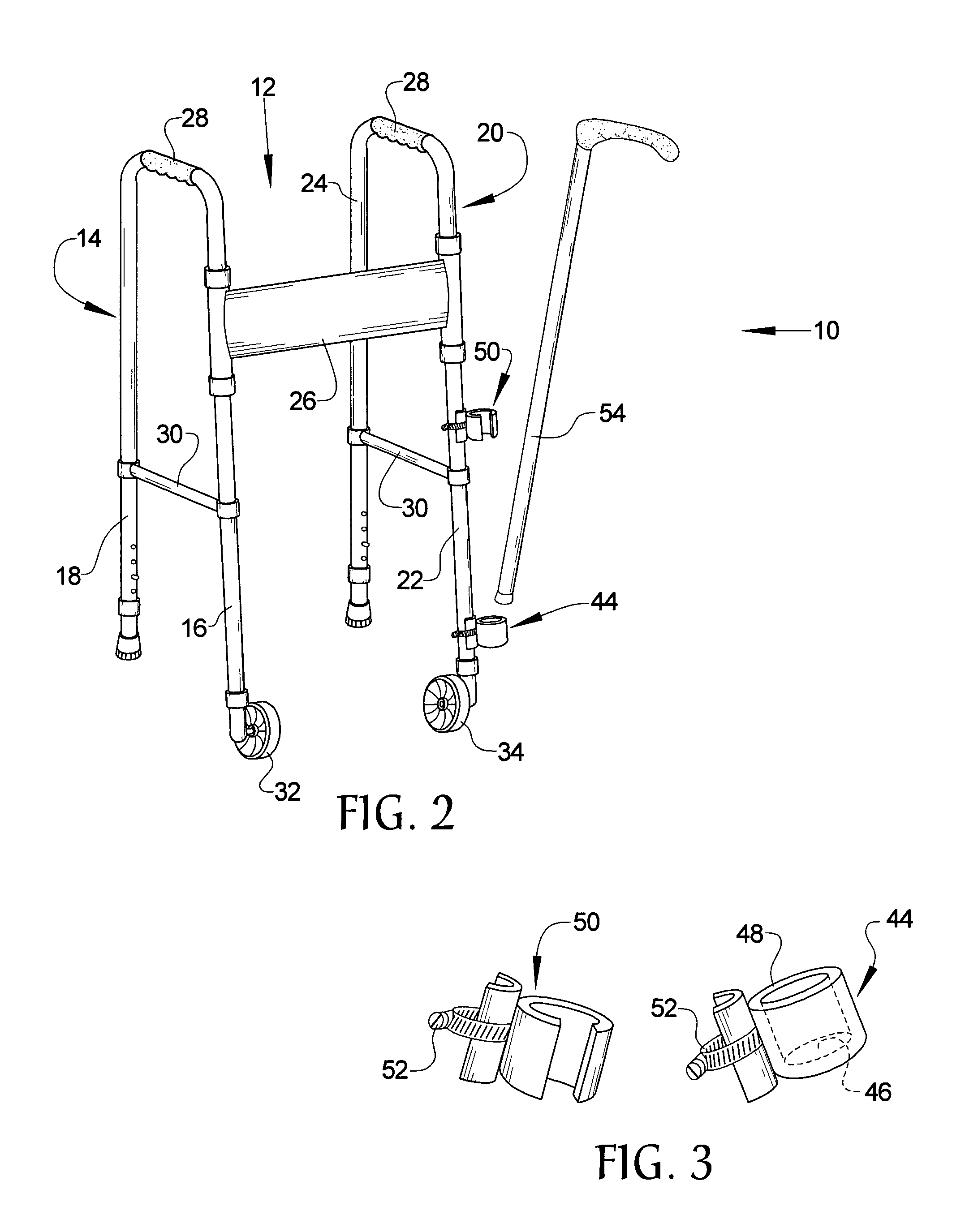Walker with cane holder and non-catch castors
a cane holder and walker technology, applied in the field of four legged walker, can solve the problems of user falling, prone to catch, and substantial support, and achieve the effects of convenient switching, convenient and convenient cane transport, and convenient us
- Summary
- Abstract
- Description
- Claims
- Application Information
AI Technical Summary
Benefits of technology
Problems solved by technology
Method used
Image
Examples
Embodiment Construction
[0015]Referring now to the drawings, it is seen that the walker with cane holder and non-catch castors of the present invention, generally denoted by reference numeral 10, is comprised of any standard walker 12 that has a first generally U-shaped frame member 14 with a first front leg 16 and a first rear leg 18 and a second generally U-shaped frame member 20 with a second front leg 22 and a second rear leg 24. The first front leg 16 is joined with the second front leg 22 by an appropriate cross member 26 of any design known in the art (the illustrated cross member 26 that allows folding of the walker 12, a scissors-based cross member, etc.).
[0016]As see, the walker 10 can have various standard features found on typical walkers such as padded grips 28, telescoping legs, braces 30 between front and rear legs, etc.
[0017]A first castor 32 of any appropriate type known in the art is rotatably attached on the first front leg 16 such that the first castor 32 is mounted so that it faces the...
PUM
 Login to View More
Login to View More Abstract
Description
Claims
Application Information
 Login to View More
Login to View More - R&D
- Intellectual Property
- Life Sciences
- Materials
- Tech Scout
- Unparalleled Data Quality
- Higher Quality Content
- 60% Fewer Hallucinations
Browse by: Latest US Patents, China's latest patents, Technical Efficacy Thesaurus, Application Domain, Technology Topic, Popular Technical Reports.
© 2025 PatSnap. All rights reserved.Legal|Privacy policy|Modern Slavery Act Transparency Statement|Sitemap|About US| Contact US: help@patsnap.com



